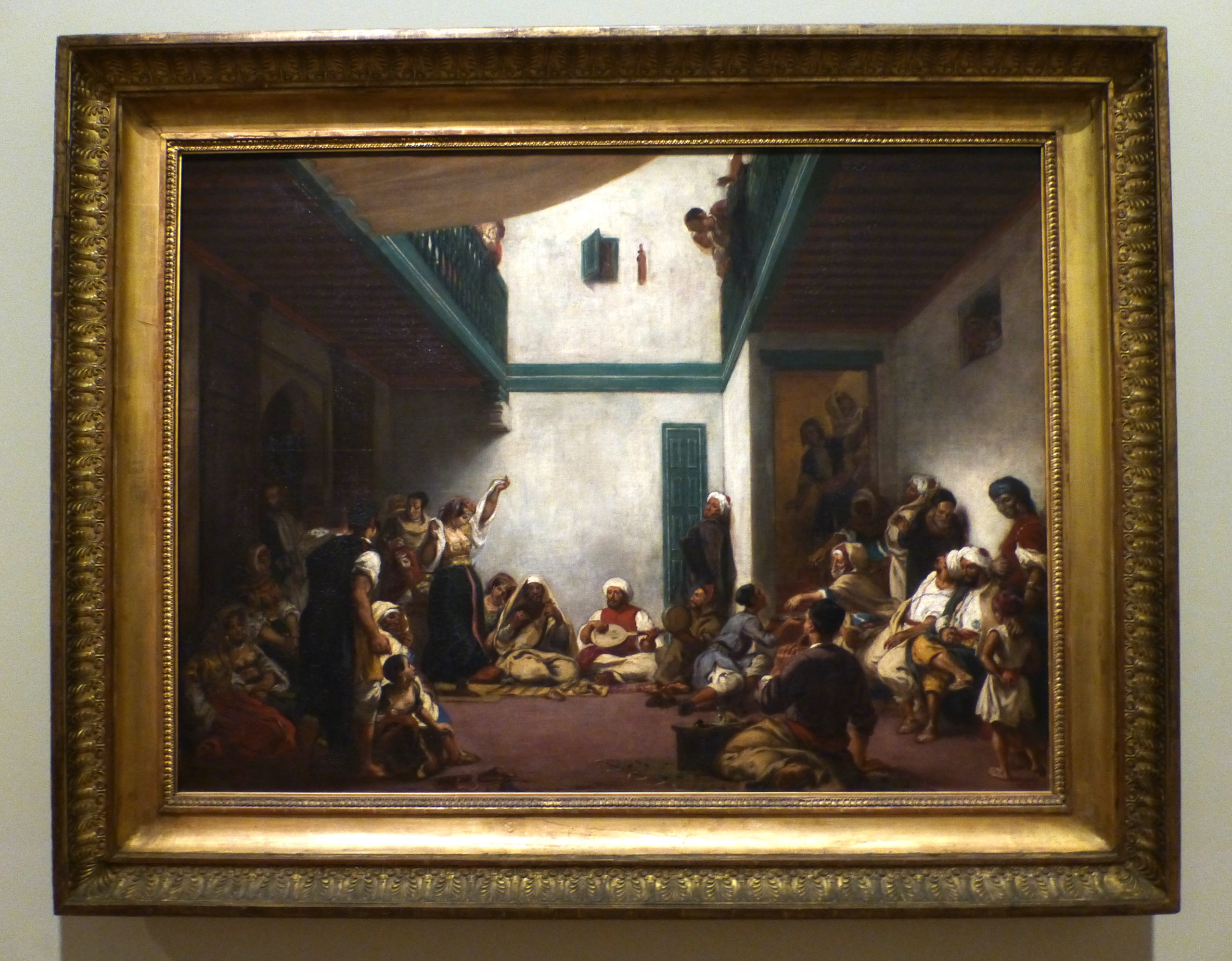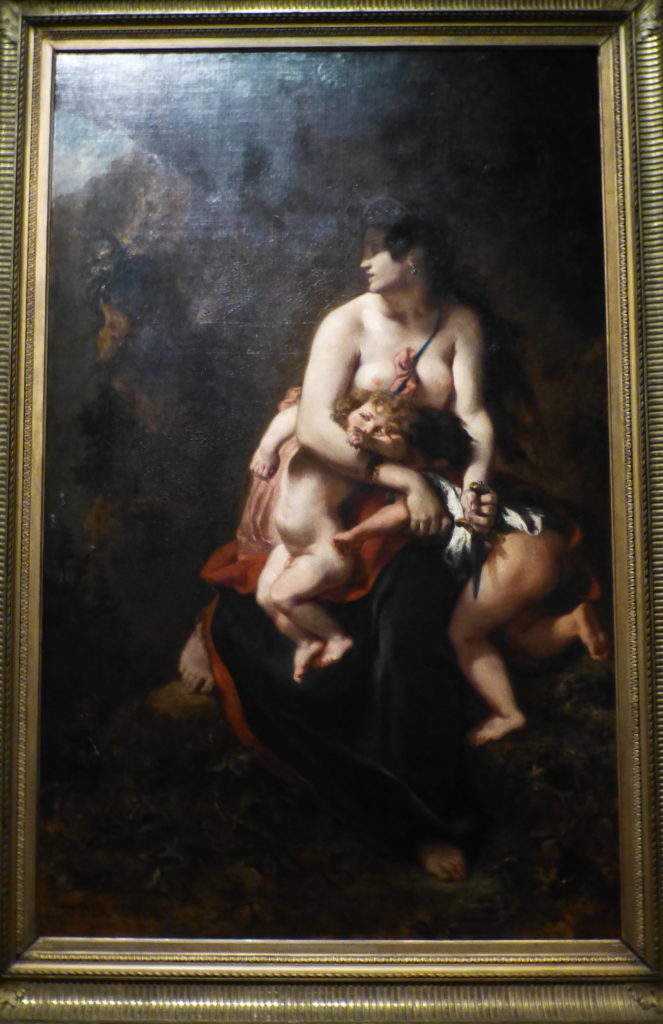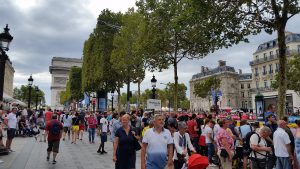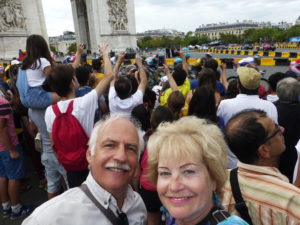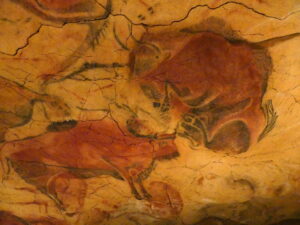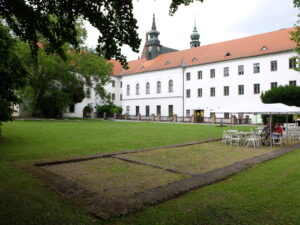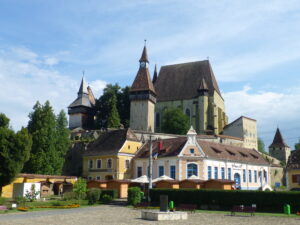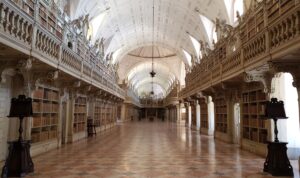We flew through Paris on the way to Iceland, partly to enjoy the city again and partly to catch a rare retrospective of the 19th century artist Eugene Delacroix. So we spent several pleasurable hours with his work at the Louvre on the very last day of the exhibit during July 2018.
Many only know Delacroix from his huge and now iconic painting of Liberty leading the people. This work was artistically a bit revolutionary at the time, mixing depictions of common people with idealized figures. We were struck by the fallen dead in the foreground, for no revolution is bloodless, however inspired.
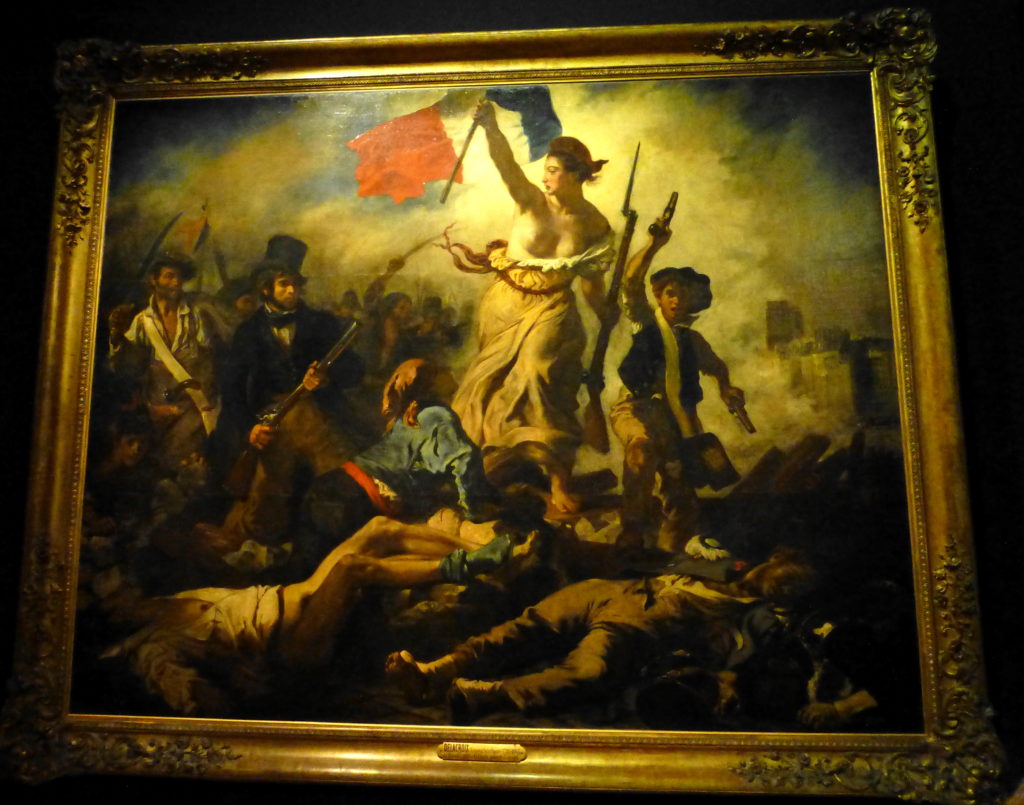
Yet the exhibit showed what a wide range of genres and styles Delacroix mastered – natural, historical, religious, mythological, political – with his expressive and dramatic sensibility.
Here, in not the best of reproductions, are some of our favorites:
- An early work, a large-scale scene from Dante’s Inferno, with Virgil leading a fearful Dante in safety. All artists have master teachers, and we all need able leaders to guide us.
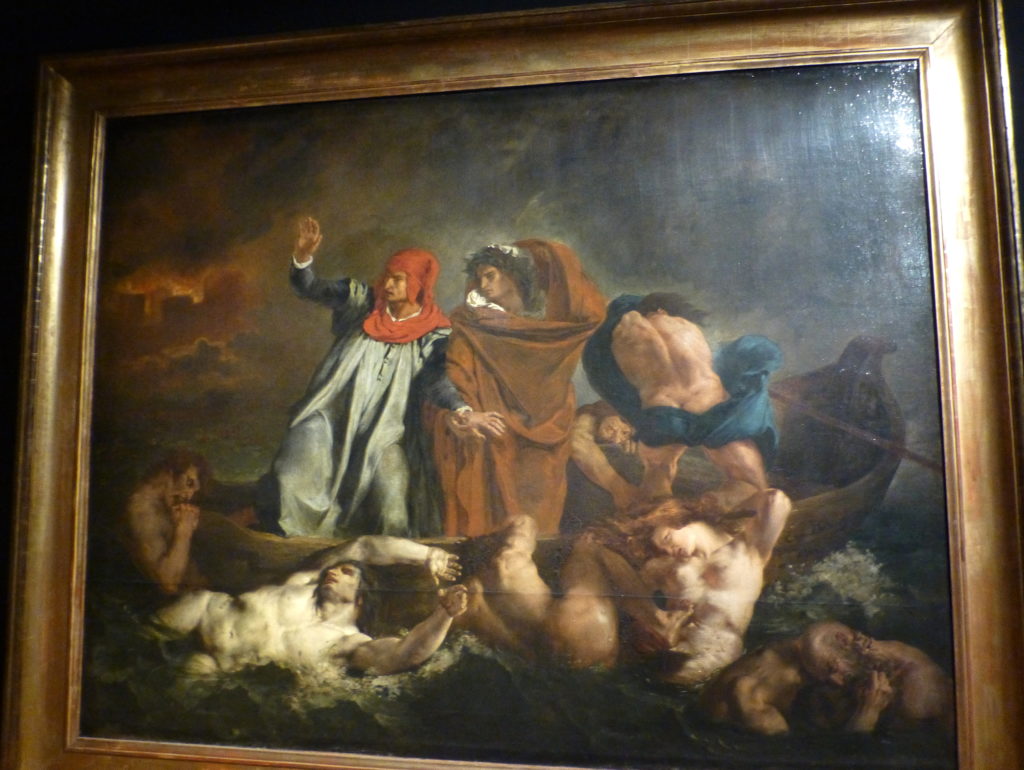
- To us, this might have been his greatest work, the Death of Sardanapalus – a strange mix of furious color and action, with dark psychological undertones of eroticism and cruelty. Only Delacroix’s lesser alternative versions were in the exhibit; this remained upstairs with the 19th century French art.
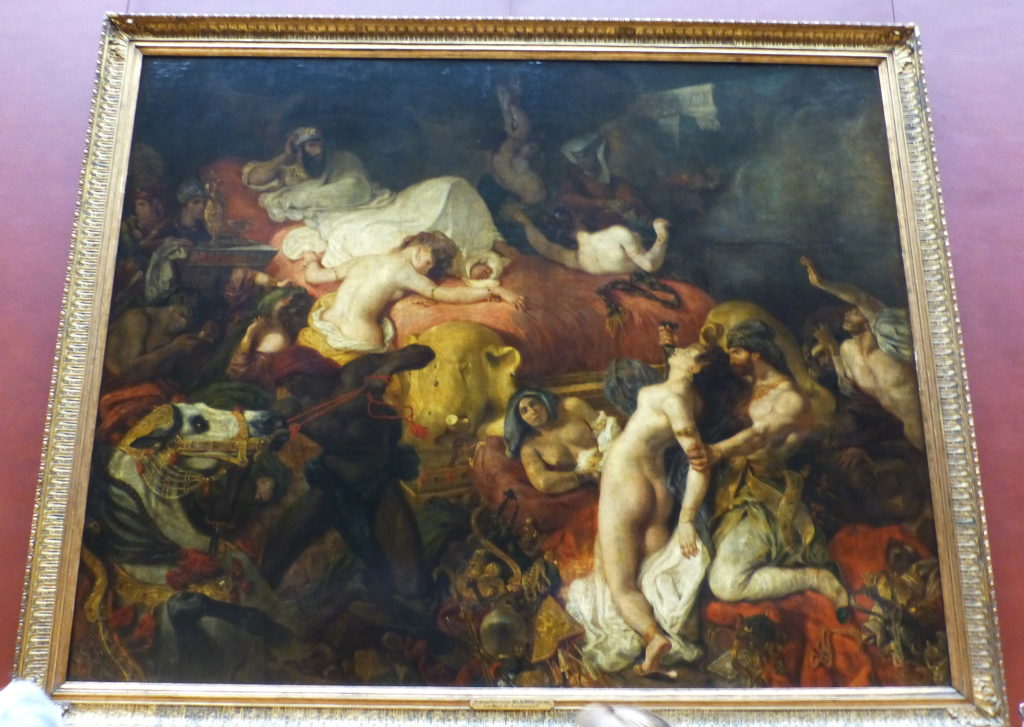
- Medea in rage, or Medee furieuse, another powerful large-scale work with Medea clutching at the children she has killed in revenge for Jason’s betrayal. Horrifying.
- Jewish wedding in Morocco, a brilliant depiction of mood, character and movement around a vibrant central space – one of his best “exotic” works from his travels in Africa.
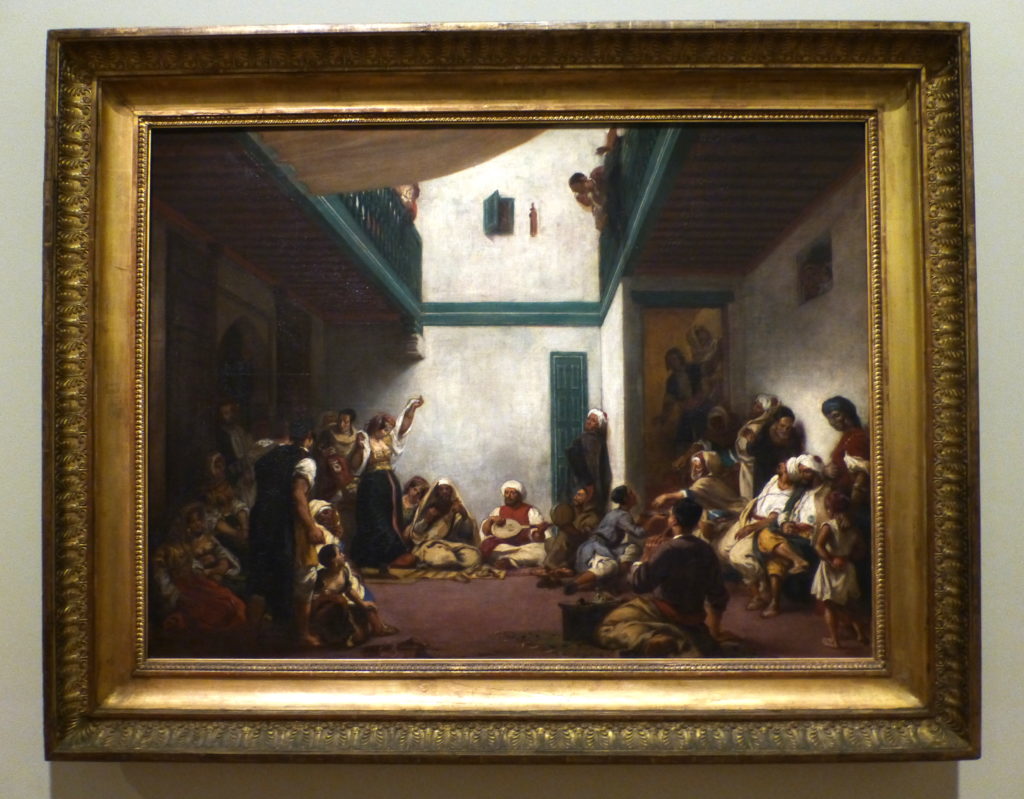
- Female Bathers. A landscape and classical scene that felt like Renoir to us
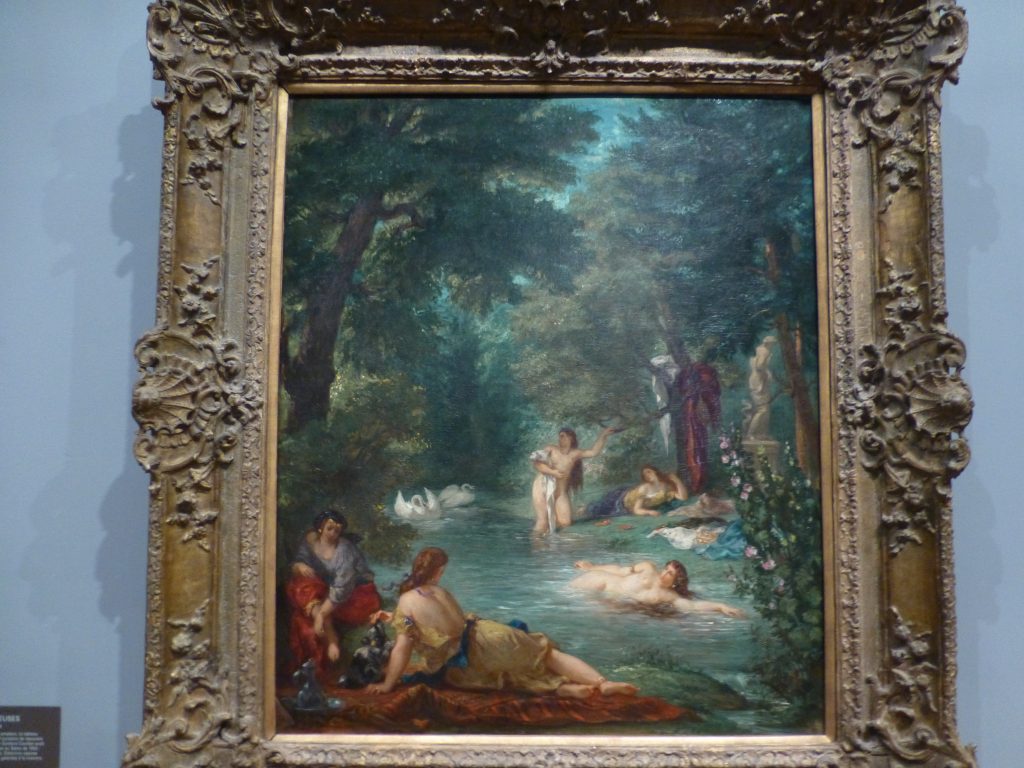
Even in miniature, in the sketch books and engravings shown at the exhibit, his artistry was thrilling.
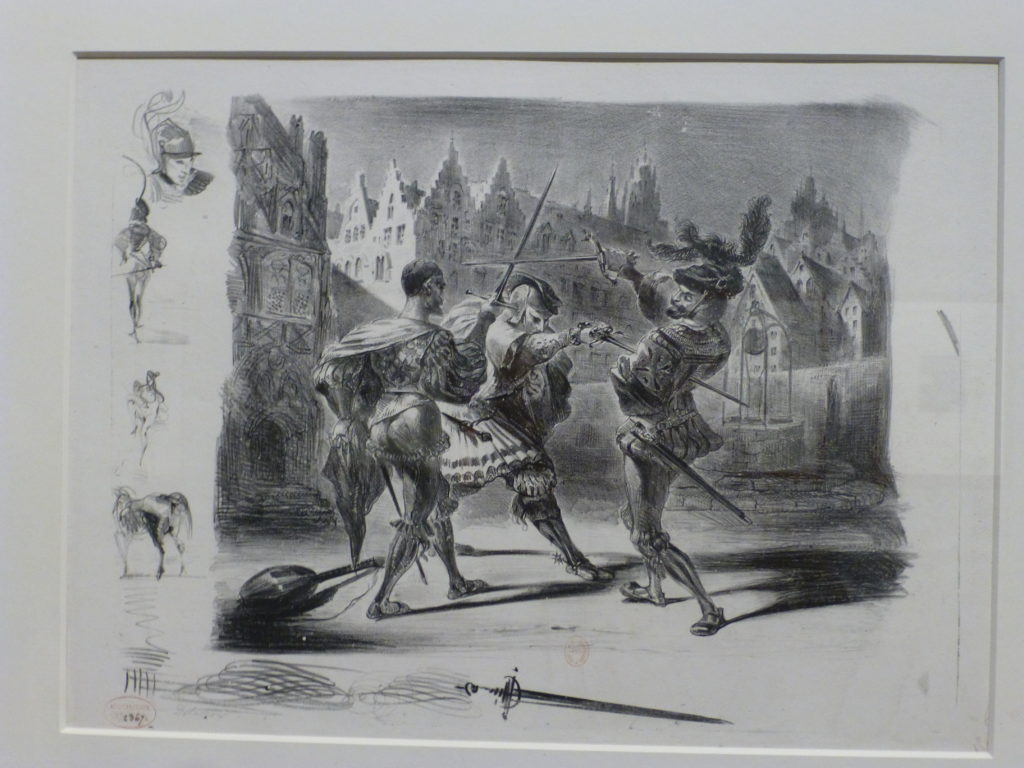
- Here is one of many superbly engraved scenes from Faust, demonstrating Delacroix’s great talent in the medium…as well as his love for Goethe and Shakespeare. We loved the “notes” he often made in the margins.
- One of Delacroix’s many notebooks, which he filled over a lifetime of study.
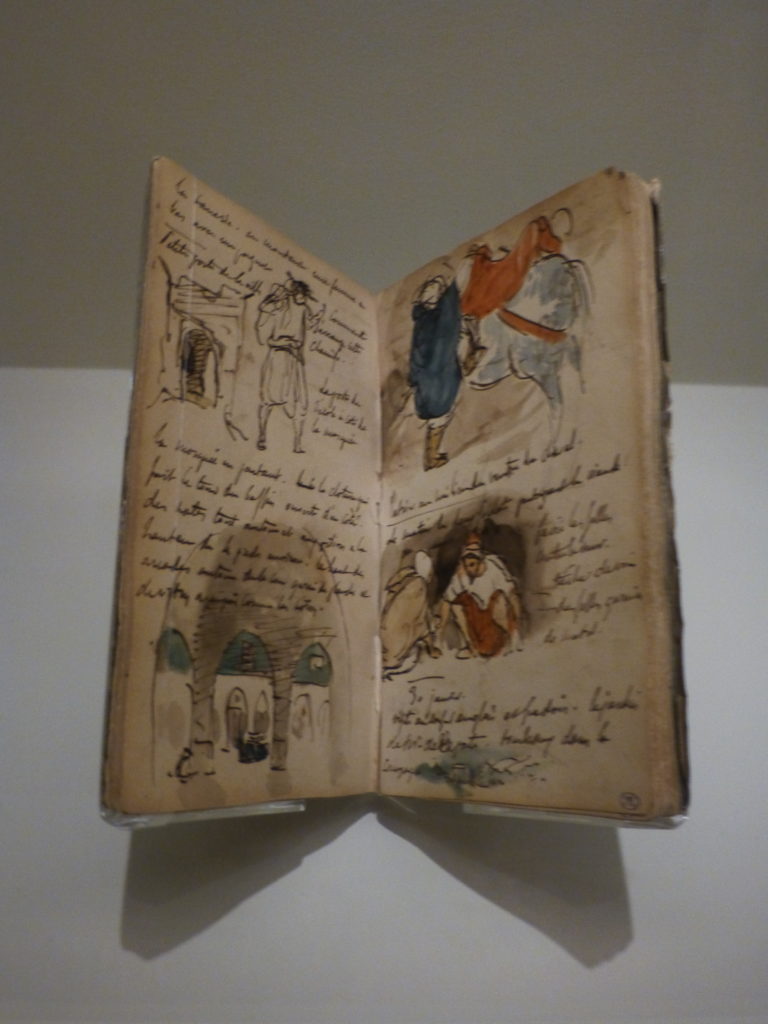
We did wander about the Louvre for a while after viewing the exhibit, catching some more 19th century French painters and the work of early Northern Europeans for a change of pace. We reconfirmed along the way that the Louvre is an arduous place because of the crowds everywhere.
So, in that grand palace, one has to be selective. Or tour the modern way: follow a map toward the rooms with the world’s greatest hits, snap a photo of some masterpiece with your phone and move on. We were dismayed to find so few people stopping to explore the works themselves while there.
Not surprisingly, the largest crowd filled one room, forming a kind of scrum for the DaVinci superstar, Mona Lisa. She’s just a tiny little picture from the back, but the dedicated guards let a few people at a time pass through the ropes to pay homage more closely.
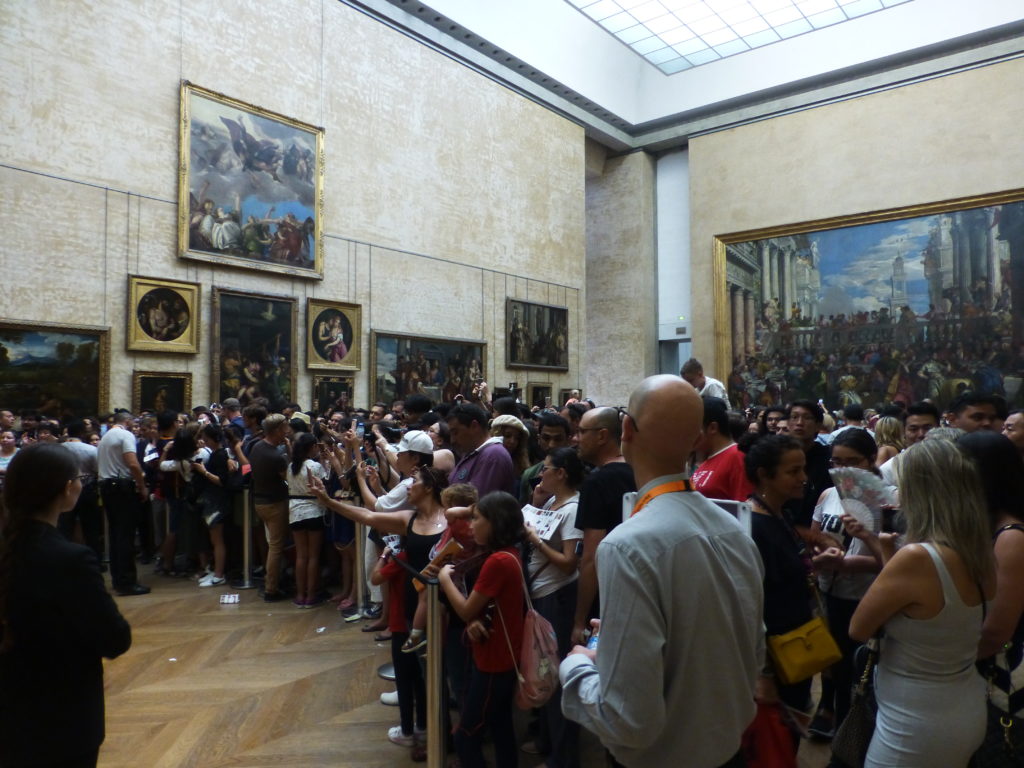
LE TOUR
Happily, we were also in the city for the renowned finish on the Champs Elysees of the great bicycle race, the Tour de France.
The crowds at the Tour were not as thick as we expected, or like the pack assailing the Mona Lisa, though things were busy enough on the sidelines as the cyclists arrived for the final loops in the city.
We loved soaking up the atmosphere at an event we had only known from TV broadcasts before.
Perhaps next time, we will hang onto the edge of a mountain ascent slapping at the riders as they slog up the steep roads.
(To enlarge any picture above, click on it. Also, for more pictures or posts from European countries, select from the Itineraries & Pictures menu at the top of the page.)


